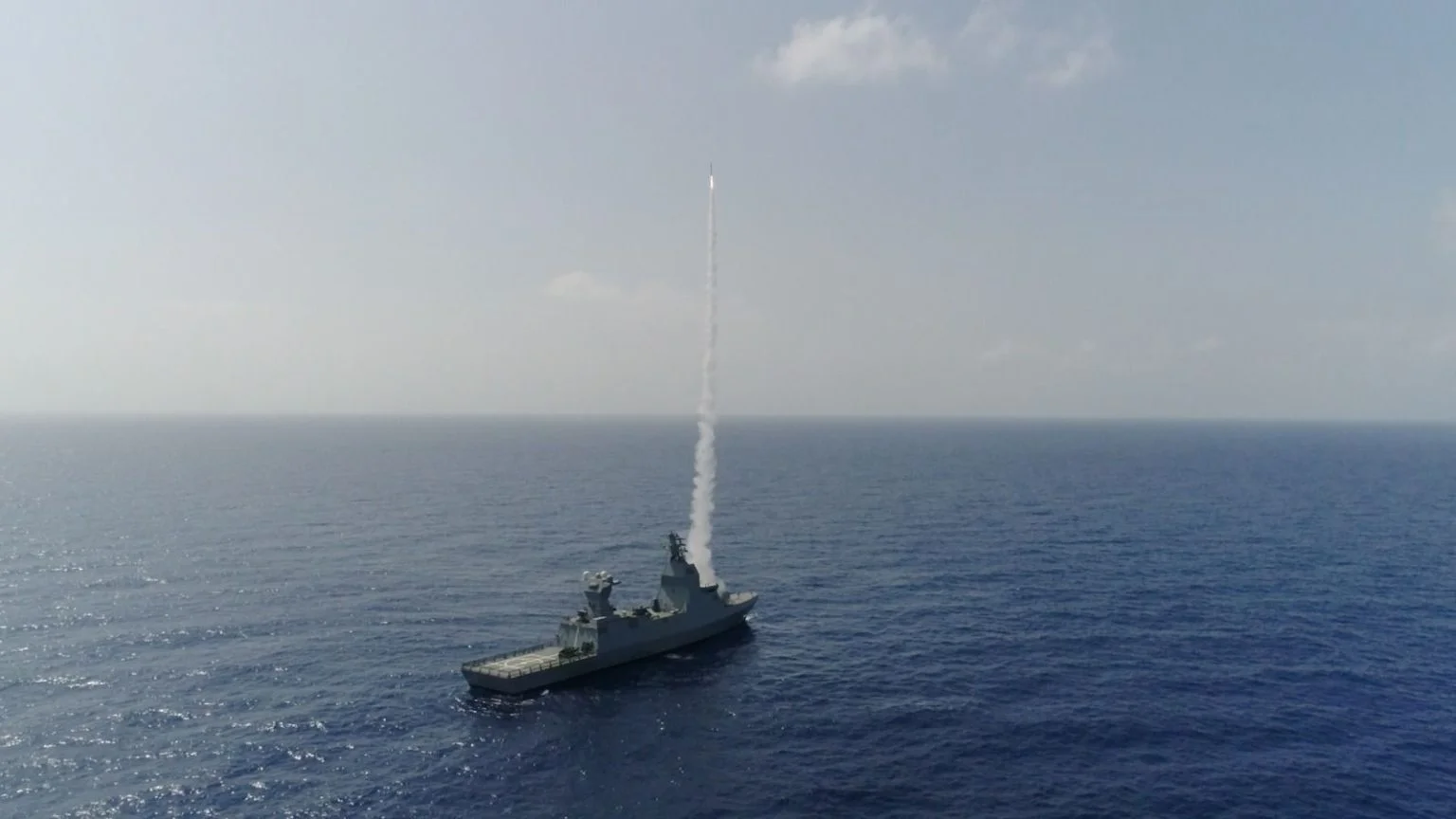The Israel Missile Defense Organization (IMDO), under the Israeli Ministry of Defense’s DDR&D, along with the Israeli Navy and Rafael Advanced Defense Systems, has successfully completed a series of multi-system and multi-tier tests using the The C-Dome (naval version of the Iron Dome system). The C-Dome successfully intercepted advanced targets which represent threats to the State of Israel’s infrastructure and strategic assets in its exclusive economic zone.Israeli Navy combat personnel operated the systems used in the test as part of the operationalization process of the “Magen” corvettes.
In November 2022, the navy had carried out a successful C-Dome interception test, but Monday’s test included a much wider array of existing and future threats that the “Magen” ships may face during conflict, such as rockets, cruise missiles, and UAVs. The tests integrated shipboard systems with Israel’s multi-tier defense array and tested new technologies to enhance the air and missile defense multi-tier array’s operational effectiveness at sea and on land. The success of the tests is another significant milestone in the array’s development to counter existing and future threats in various combat arenas.
Head of the DDR&D, Brig. Gen. (res.) Dr. Daniel Gold said: “These successful tests are one of the many efforts we are carrying out to improve our air and missile defense systems’ preparedness for future threats and improve system performance in the face of existing threats. The campaign’s success further strengthens our confidence in the defense systems and their ability to protect extensive areas as well as the State of Israel’s strategic assets on land and at sea. We will continue working together with the IDF and Israeli defense industries to protect the State of Israel while realizing and preserving the State of Israel’s qualitative advantage.”
Minister of Defense, Yoav Gallant said: “The C-Dome system constitutes a significant leap forward in our defense capabilities and ensures the Israeli defense establishment’s superiority and operational capabilities in the face of growing threats in the maritime arena. The system’s naval adaptation is part of our advanced multi-tier air and missile defense system. I would like to express my great appreciation for the Directorate for Defense R&D, the IDF, and Rafael for turning a tech vision into reality – developing operational capabilities in the field.”
Director of DDR&D’s IMDO, Moshe Patel, said: “The Israeli defense establishment is constantly upgrading the Iron Dome’s capabilities on land and at sea to increase its effectiveness. During this current campaign, we successfully tested the Naval Iron Dome’s new capabilities aboard the Sa’ar 6 corvette together with additional systems in Israel’s multi-tier air and missile defense array, including connectivity between systems on board with those on land and a new radar developed to protect Israel’s exclusive economic zone. The system successfully identified various threats, including rockets, UAVs, and cruise missiles, and destroyed them using interceptors launched from onboard the ship at sea, with exceptional precision.
Iron Dome (Kippat Barzel) is a mobile all-weather air defense system[8] developed by Rafael Advanced Defense Systems and Israel Aerospace Industries. In October 2014, Rafael unveiled a naval version of the Iron Dome called C-Dome. It is designed to protect vessels in blue and littoral waters from ballistic trajectory and direct attack weapons fired in saturation attacks. C-Dome includes a 10-round canister loaded with vertically-launched Tamir interceptors for 360-degree coverage, a feature not supported by the land-based Iron Dome system; the ship’s own surveillance radar is used to negate the need for a dedicated fire control radar. The system has a small footprint to enable installation on small ships like offshore patrol vessels, corvettes, and even stationary oil rigs















